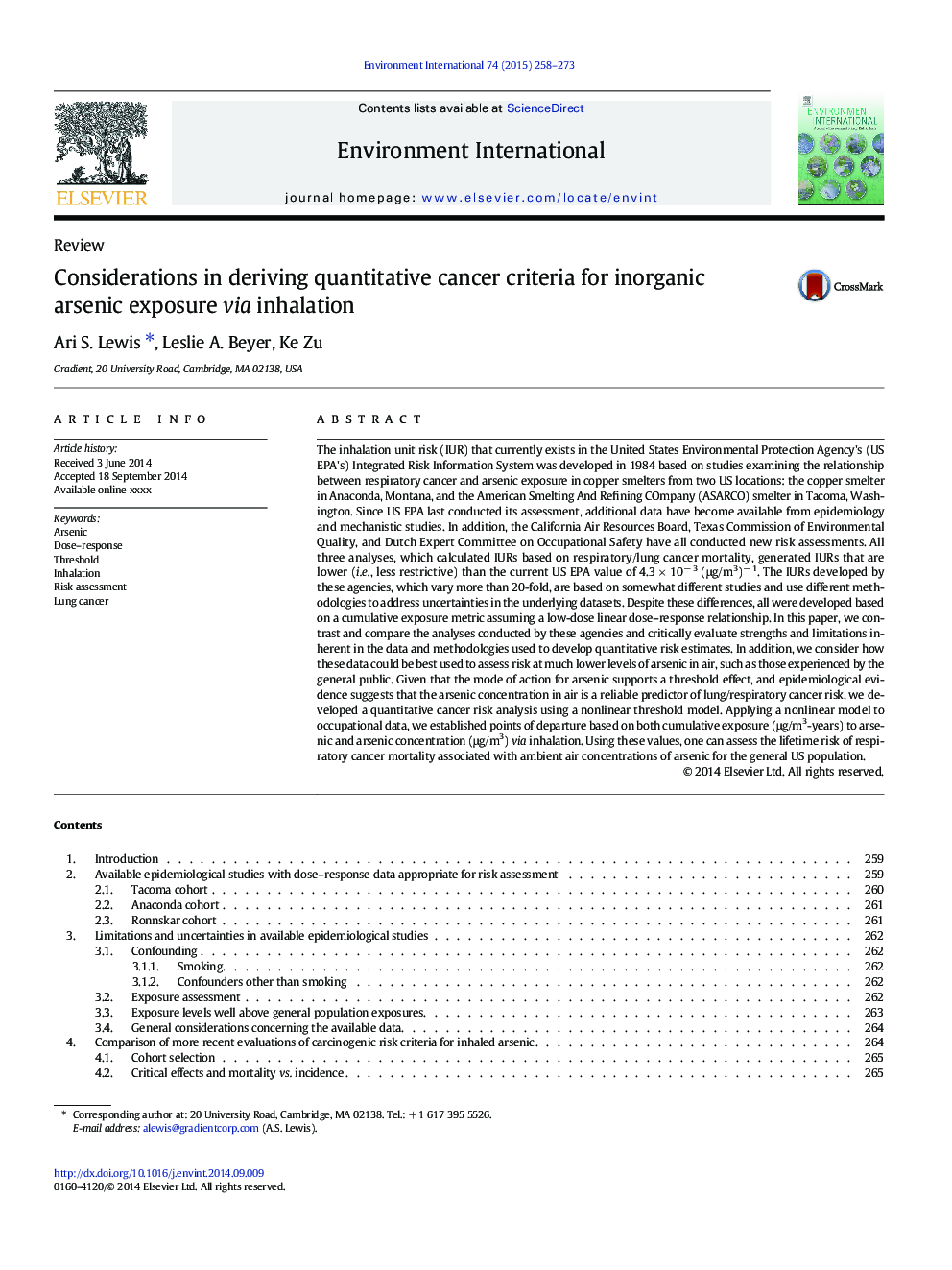| کد مقاله | کد نشریه | سال انتشار | مقاله انگلیسی | نسخه تمام متن |
|---|---|---|---|---|
| 6313929 | 1619054 | 2015 | 16 صفحه PDF | دانلود رایگان |
عنوان انگلیسی مقاله ISI
Considerations in deriving quantitative cancer criteria for inorganic arsenic exposure via inhalation
ترجمه فارسی عنوان
معایب در آوردن معیارهای سرطان کمی برای قرار گرفتن در معرض آرسنیک معدنی از طریق استنشاق
دانلود مقاله + سفارش ترجمه
دانلود مقاله ISI انگلیسی
رایگان برای ایرانیان
کلمات کلیدی
آرسنیک، پاسخ دز؟ آستانه، استنشاق، ارزیابی ریسک، سرطان ریه،
موضوعات مرتبط
علوم زیستی و بیوفناوری
علوم محیط زیست
شیمی زیست محیطی
چکیده انگلیسی
The inhalation unit risk (IUR) that currently exists in the United States Environmental Protection Agency's (US EPA's) Integrated Risk Information System was developed in 1984 based on studies examining the relationship between respiratory cancer and arsenic exposure in copper smelters from two US locations: the copper smelter in Anaconda, Montana, and the American Smelting And Refining COmpany (ASARCO) smelter in Tacoma, Washington. Since US EPA last conducted its assessment, additional data have become available from epidemiology and mechanistic studies. In addition, the California Air Resources Board, Texas Commission of Environmental Quality, and Dutch Expert Committee on Occupational Safety have all conducted new risk assessments. All three analyses, which calculated IURs based on respiratory/lung cancer mortality, generated IURs that are lower (i.e., less restrictive) than the current US EPA value of 4.3 Ã 10â 3 (μg/m3)â 1. The IURs developed by these agencies, which vary more than 20-fold, are based on somewhat different studies and use different methodologies to address uncertainties in the underlying datasets. Despite these differences, all were developed based on a cumulative exposure metric assuming a low-dose linear dose-response relationship. In this paper, we contrast and compare the analyses conducted by these agencies and critically evaluate strengths and limitations inherent in the data and methodologies used to develop quantitative risk estimates. In addition, we consider how these data could be best used to assess risk at much lower levels of arsenic in air, such as those experienced by the general public. Given that the mode of action for arsenic supports a threshold effect, and epidemiological evidence suggests that the arsenic concentration in air is a reliable predictor of lung/respiratory cancer risk, we developed a quantitative cancer risk analysis using a nonlinear threshold model. Applying a nonlinear model to occupational data, we established points of departure based on both cumulative exposure (μg/m3-years) to arsenic and arsenic concentration (μg/m3) via inhalation. Using these values, one can assess the lifetime risk of respiratory cancer mortality associated with ambient air concentrations of arsenic for the general US population.
ناشر
Database: Elsevier - ScienceDirect (ساینس دایرکت)
Journal: Environment International - Volume 74, January 2015, Pages 258-273
Journal: Environment International - Volume 74, January 2015, Pages 258-273
نویسندگان
Ari S. Lewis, Leslie A. Beyer, Ke Zu,
